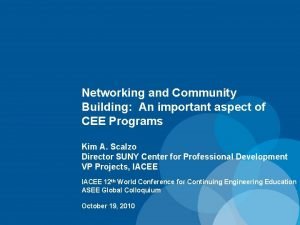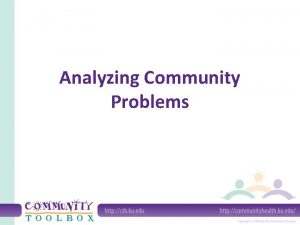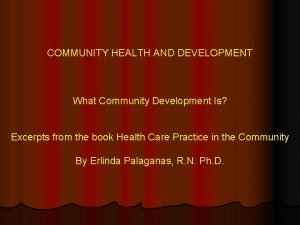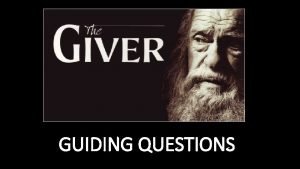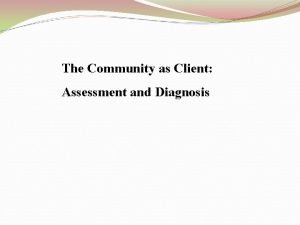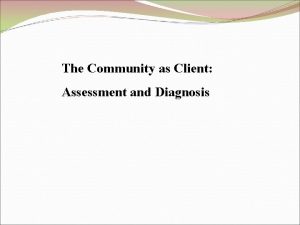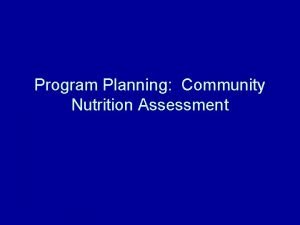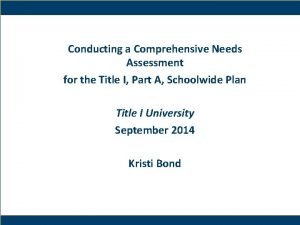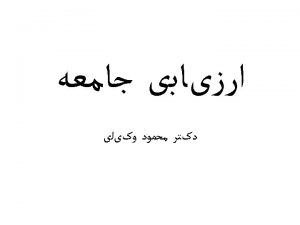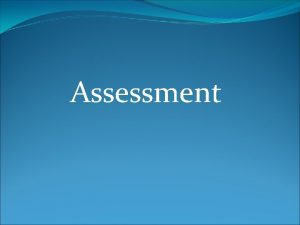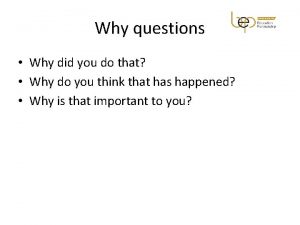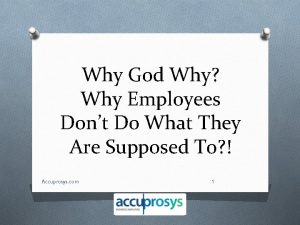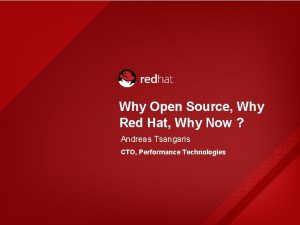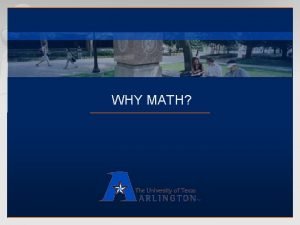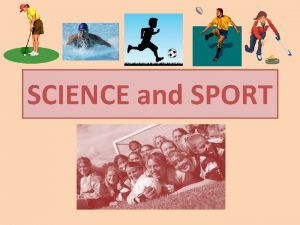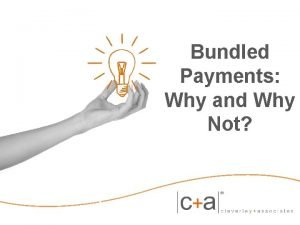Community Assessment Why do a community assessment Assessment

















- Slides: 17

Community Assessment

Why do a community assessment? Assessment is part of a process of understanding a community and producing change Re-assess Alternatives Action

What is a community assessment? Ø (internal/external) to the community that will impede it’s progress? Strengths – What resources (physical, human, financial) does the community have which may be used to support it’s goals? Ø Weaknesses – What problems are present which would keep the community from reaching it’s goals? Ø Opportunities – What opportunities (internal and external) are there that may/should be taken advantages of? Ø Threats – What are threats (internal/external) to the community that will impede it’s progress?

el Weaknesses U ina se te str or en le gth ss s en to th re a im Opportunities ts ge ed ake ies l ow t nit kn s to rtu se ill po ea sk op r r f c In d/o e o an tag n va ad Increase knowledge and/or skills to eliminate or lessen threats Use strengths to take advantage of opportunities Strengths Threats

Community can be sliced several ways to see different components the community sphere

Slice

Slice 1 Civic & Social Organizations Financial Education Social Services Physical Infrastructure Economic Development Commercial & Wholesale Community Utilities Health Labor Production Manufacturing Agriculture Government Tourism Communications Retail & Service Businesses Spiritual Community

Slice 2 Socioeconomic Class Sex Family History Old–timers & Newcomers Religious Affiliation or Nonaffiliation Class Local Coordinating Community Team Ethnic Cultural Racial Occupation Age “Part of Town” or Community Area of Residence Community Roles

Slice 3 Jobs Growth Economic Development Housing Health – access – quality Social Justice Local Coordinating Team Community Education – access – quality Social Environment “Community Spirit” Values Environment Historic Preservation/ Community Revitalization

Community Capitals Model Cornelia Butler Flora North Central Regional Center for Rural Development, Jan Flora, Iowa State University, 2004.

Community Reconnaissance Inventory vs. Assessment

Community Needs Maps Apathy Crime Vacant Houses and Lots Welfare Recipients Unemployment Teen Parents Dropouts Drugs

Community Assets Maps Care and Concern Schools Space for Gardens People’s Skills, Talents, Resources, and Knowledge Churches Youth and Retirees Libraries Parks

How do we do a community assessment ØObservation ØCABWA ØDocument analysis ØPublic records analysis ØContent analysis ØInterviews ØKey informant interviews ØFocus groups ØAsset mapping ØEvents ØTask force/advisory group ØIssues open house ØCommunity forum/town hall meeting ØSurveys ØCommunity opinion surveys ØCommunity needs assessments ØDelphi Surveys

Data does not always equal usable information. It can tell us what is, but not the why.

Data concentrates on symptoms, not root causes In our community assessment, we want to gain an understanding of root causes

We want to invest our time and resources in working with others to deal with root causes to the extent possible.
 Why why why why
Why why why why Don't ask why why why
Don't ask why why why Why-why analysis
Why-why analysis Wh tongue twister
Wh tongue twister Does the table represent a function why or why not
Does the table represent a function why or why not Does this table represent a function why or why not
Does this table represent a function why or why not Why or why not
Why or why not Contoh root cause analysis
Contoh root cause analysis Why building community is important
Why building community is important Practical problems in community
Practical problems in community Principles of community health
Principles of community health Why is the community so desperate to get jonas back?
Why is the community so desperate to get jonas back? Community action cycle
Community action cycle Community as a client
Community as a client Community subsystem assessment
Community subsystem assessment Community nutrition assessment
Community nutrition assessment Community needs assessment steps
Community needs assessment steps Community assessment wheel model
Community assessment wheel model








